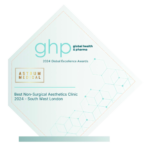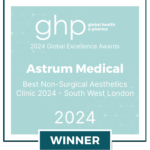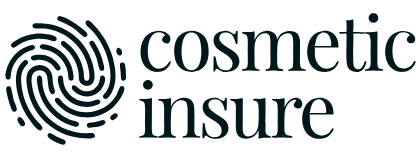What to Expect From Your First Botox Injection Appointment?
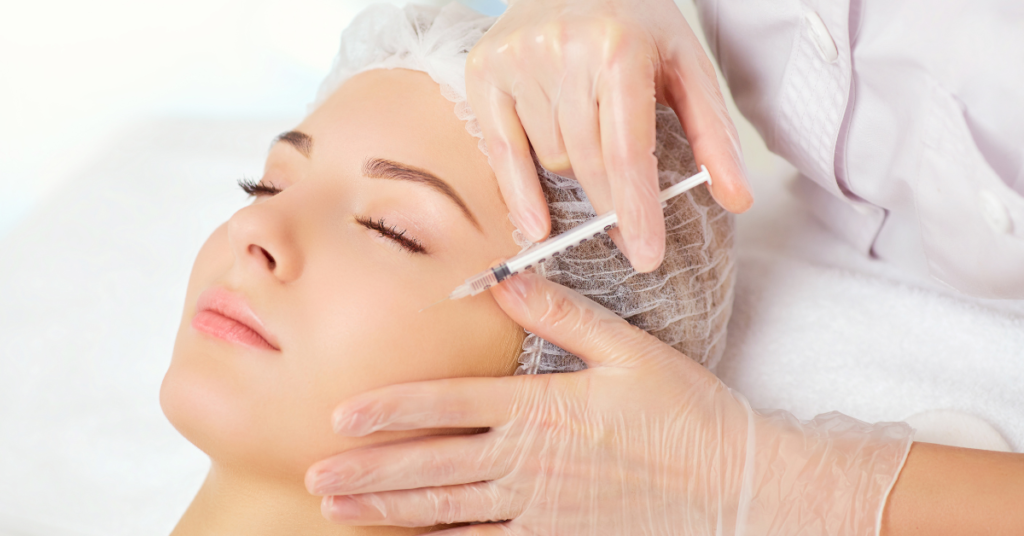
When you step into the clinic for your first Botox injection appointment, imagine a serene environment where everything is meticulously arranged to put you at ease. You’ll begin with a thorough consultation covering your facial anatomy, skin texture, and muscle activity. Your practitioner will also review your medical history to pinpoint any potential issues. Once that’s done, you’ll collaborate on a personalised treatment plan tailored to your goals. The actual injections are quick and usually involve minimal discomfort. But what happens next? Let’s explore the immediate aftercare and what you can expect in the following days. Key Takeaways – Comprehensive assessment of facial anatomy, skin texture, and muscle activity. – Detailed review of medical history to ensure treatment safety. – Creation of a personalised treatment plan based on individual goals. – Quick, minimally uncomfortable procedure with results visible in a few days. – Post-procedure care includes avoiding strenuous activities and applying a cold compress. Initial Consultation During your initial discussion, the practitioner will thoroughly assess your facial anatomy to determine the best approach for your Botox treatment. They’ll examine your skin texture, muscle activity, and expression patterns to create a tailored plan. This evaluation is essential for achieving optimal results and minimising potential side effects. Your practitioner will explain how Botox works and highlight the long term benefits, such as smoother skin and reduced appearance of fine lines and wrinkles. They’ll discuss how the treatment can prevent deeper lines from forming over time, offering a proactive approach to maintaining a youthful appearance. Understanding the potential side effects is also crucial. Common side effects include minor bruising, swelling, or redness at the injection sites. Your practitioner will provide guidance on how to manage these, ensuring they resolve quickly. They’ll also inform you about rare but serious side effects, such as drooping eyelids or asymmetry, and what to do if these occur. The discussion is your opportunity to ask questions and express any concerns. By the end, you should have a clear understanding of the procedure, its benefits, and any risks involved. This guarantees you’re fully informed and confident in your decision to proceed with Botox. Medical History Review Before proceeding with the injections, your practitioner will conduct a thorough review of your medical history to ensure the treatment is safe and suitable for you. They’ll start by asking about any pre-existing medical conditions, current medications, and past cosmetic procedures. This is essential because certain medications and conditions could increase the risk of potential side effects. Your practitioner will also inquire about any allergies and sensitivities you might have. Botox contains botulinum toxin, and while rare, allergic reactions can occur. Knowing your allergy history helps your practitioner take the necessary precautions to minimise any risk. They’ll also evaluate your skin’s condition and discuss any previous adverse reactions to treatments or injections. Moreover, your practitioner will ask about lifestyle factors that could impact your Botox results. This includes smoking habits, alcohol consumption, and any recent illnesses. These factors can influence both the efficacy and safety of the treatment. For women, it’s important to disclose if you’re pregnant or breastfeeding, as Botox isn’t recommended in these cases. Treatment Planning Your practitioner will develop a personalised treatment plan based on your specific goals and medical history. They’ll discuss various treatment options tailored to address your concerns, whether it’s reducing fine lines, treating chronic migraines, or managing excessive sweating. The plan will consider your skin type, age, and any previous treatments you’ve had. During this discussion, your practitioner will also inform you about potential side effects. These can range from mild bruising and swelling at the injection site to more uncommon reactions such as headaches or temporary muscle weakness. Knowing these possibilities helps you make an informed decision about proceeding with the treatment. It’s essential to communicate openly about your expectations and any apprehensions you might have. Your practitioner will outline the anticipated results and give you a realistic timeframe for when you might start seeing improvements. They may also discuss the number of sessions required to achieve best results and the maintenance schedule needed to sustain them. The Injection Process The practitioner will cleanse the targeted area thoroughly to minimise the risk of infection. This step guarantees that any contaminants are removed, providing a sterile environment for the injections. Next, they’ll use a fine needle to administer the Botox, employing a precise injection technique tailored to your specific facial anatomy and treatment goals. The number of injections and the specific locations will vary depending on the areas you’re treating. Regarding the pain level, most patients report minimal discomfort. The needle is very fine, and the injections are quick. Some describe the sensation as a tiny pinch or a slight pressure. If you’re particularly sensitive, you can ask your practitioner to apply a topical numbing cream beforehand to further reduce any potential discomfort. Throughout the process, the practitioner will monitor your facial muscles’ response to ensure the Botox is distributed evenly and effectively. The entire procedure typically takes about 10 to 30 minutes, depending on the extent of the treatment. Immediate Aftercare Right after your Botox injections, it’s crucial to follow specific aftercare instructions to maximise outcomes and minimise side effects. Begin by refraining from strenuous activities for at least 24 hours to assist in managing swelling and preventing bruising. Applying a cold compress intermittently can help decrease swelling and offer pain relief. However, avoid applying direct pressure on the treated areas. Abstain from touching, rubbing, or massaging the injection sites for at least 24 hours. This precaution helps prevent the Botox from spreading to unintended areas, which can result in complications. To further aid in bruising prevention, refrain from consuming alcohol and blood-thinning medications like aspirin and ibuprofen for a few days after the treatment. Your recovery timeline varies depending on individual healing processes, but most individuals observe
How Does Mole Removal Work at Astrum Medical?
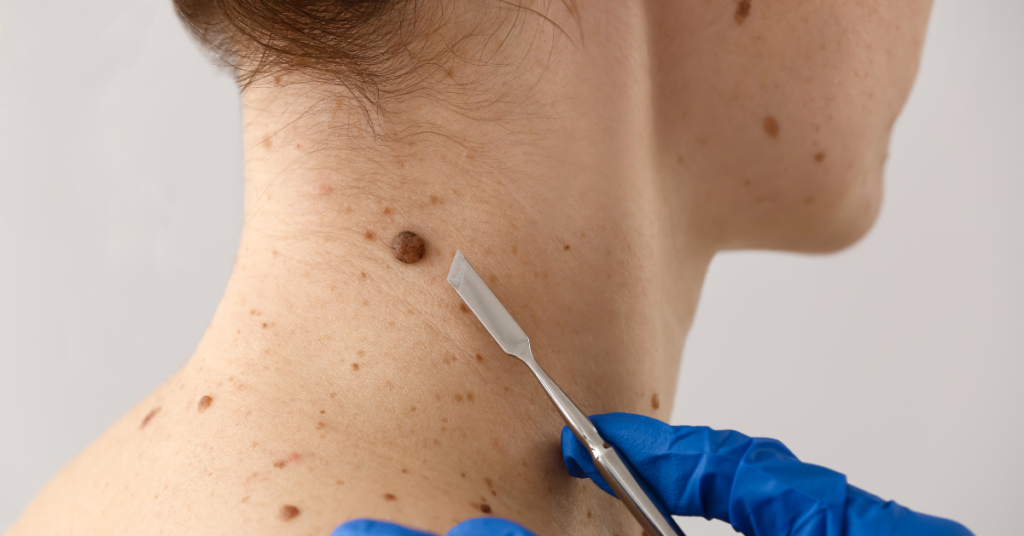
It’s interesting that you’re thinking about mole removal, as we at Astrum Medical have our own way of doing it. You’ll start with an in-depth consultation where a dermatologist evaluates your mole and discusses the best removal options. Whether it’s excision, laser therapy, or cryotherapy, each method has its pros and cons. The focus is always on safety and achieving the best cosmetic results. But what happens after the procedure? There’s a tailored recovery plan you’ll need to follow meticulously. Let’s explore the steps involved and what you can expect during the healing process. Key Takeaways – Dermatologists assess moles and discuss removal options like excision, laser therapy, and cryotherapy. – Mole mapping and digital imaging track changes over time for effective monitoring. – Removal techniques prioritise safety, scar prevention, and cosmetic results using methods like surgical excision and laser treatment. – Local anaesthetics are used for pain management during procedures. – Post-treatment care and follow-up appointments ensure proper healing and long-term monitoring. Initial Consultation During your initial consultation at Astrum Medical, the dermatologist will assess your mole and discuss potential removal options tailored to your specific needs. They’ll consider factors like the mole’s size, location, and appearance. This thorough approach ensures that you receive the most effective treatment options available. Your dermatologist will explain each method, including excision, laser therapy, and cryotherapy, highlighting the benefits and risks of each. Addressing patient concerns is a top priority. You’ll have the opportunity to ask questions about the procedure, recovery time, and potential scarring. The dermatologist will provide detailed answers to help you make an informed decision. They understand that each patient has unique concerns and will take the time to discuss any specific issues you may have, such as pain management or cosmetic outcomes. Skin Examination The dermatologist will meticulously inspect your skin to evaluate the mole’s characteristics and determine the most appropriate elimination method. During your dermatologist consultation, the specialist will use a dermatoscope to examine the mole’s size, shape, colour, and border. This thorough examination helps identify any unusual features that may indicate malignancy. As part of melanoma screening, the dermatologist will assess the mole for asymmetry, irregular borders, multiple colours, diameter greater than 6mm, and any evolution over time—commonly known as the ABCDE criteria. These factors are vital in distinguishing benign moles from potential melanomas. If any signs raise concern, the dermatologist may recommend a biopsy to obtain a definitive diagnosis before proceeding with removal. Your medical history and any family history of skin cancer will also be discussed to provide a comprehensive evaluation. This information helps in understanding your risk factors and tailoring the approach accordingly. Mole Mapping Through mole mapping, a dermatologist creates a detailed record of your moles to monitor for any changes over time, ensuring early detection of potential skin issues. This process involves a thorough initial examination where each mole’s location, size, colour, and shape are documented. Digital imaging technology plays a pivotal role in this procedure, allowing your dermatologist to capture high-resolution images of your skin. These images are then stored in a secure database for future comparison. During follow-up appointments, your dermatologist will refer to these baseline images to assess any changes in your moles. This methodical approach to monitoring progress is vital for identifying early signs of melanoma or other skin abnormalities. By comparing current images with previous ones, even subtle changes can be detected promptly. Mole mapping is particularly beneficial for individuals with a high number of moles or those with a personal or family history of skin cancer. It provides a detailed overview of your skin’s condition, helping your dermatologist make informed decisions about your care. Regular mole mapping appointments are a proactive step in maintaining your skin health and catching potential issues before they become serious. Removal Techniques At Astrum Medical, mole removal techniques are tailored to suit each patient’s unique needs, guaranteeing both safety and effectiveness. You’ll find that our approach prioritises scar prevention and excellent cosmetic results. We offer several methods, including laser removal, cryotherapy, and shave excision, each chosen based on the mole’s characteristics and your personal preferences. Laser removal employs focused light beams to target pigmented cells, minimising damage to surrounding tissue and reducing scarring. Cryotherapy involves freezing the mole with liquid nitrogen, causing it to fall off naturally. Shave excision, on the other hand, involves carefully shaving the mole off the skin’s surface, ideal for raised moles. Pain management is crucial to our process. We use local anaesthetics to ensure you remain comfortable during the procedure. Post-treatment care is equally important; you’ll receive detailed instructions to help your skin heal properly and minimise any potential scarring. This includes keeping the area clean, applying prescribed ointments, and avoiding sun exposure. Cosmetic concerns are addressed during your consultation, where we discuss the best technique for achieving your desired outcome. At Astrum Medical, we aim to provide you with effective results while prioritising your comfort and care. Surgical Excision For moles that require a more invasive approach, surgical excision offers a precise and effective solution. At Astrum Medical, this procedure involves removing the mole along with a margin of surrounding tissue to ensure complete excision. Your physician will use a local anaesthetic to numb the area, making the process virtually painless. Scar prevention is a primary focus during surgical excision. Our skilled surgeons employ advanced techniques to minimise scarring, such as precise incision lines and careful suturing. After the mole is removed, the incision is closed with fine stitches, which are usually removed within one to two weeks. Post-operative care is essential for best healing and scar prevention. You’ll receive detailed instructions on how to care for the wound, including keeping the area clean and dry, applying prescribed ointments, and avoiding strenuous activities that may strain the incision. Follow-up appointments are scheduled to monitor the healing process and address
PRP Treatment for Under Eyes
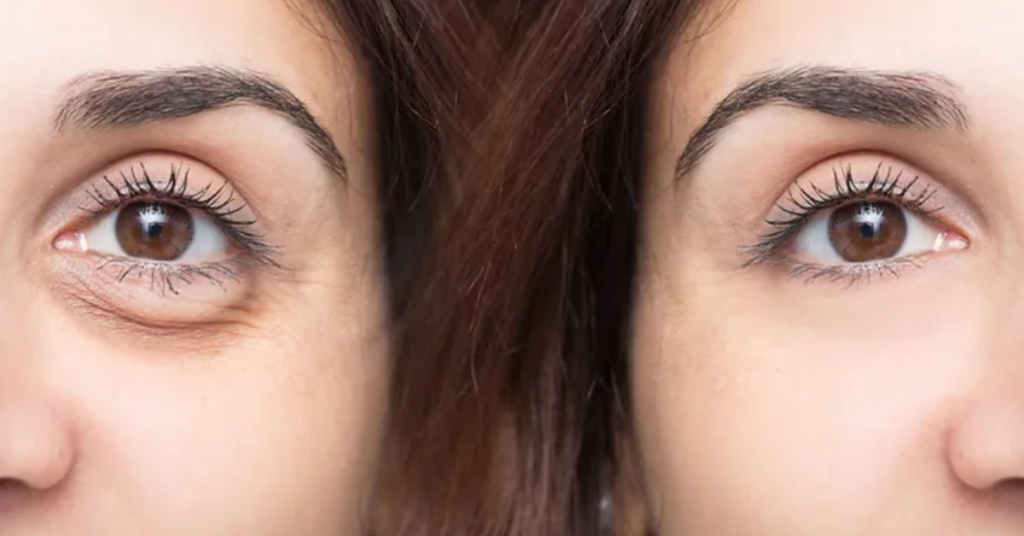
Our busy modern lives can be intrusive on our skin. Pollution, stress, drinking, sun exposure and lack of sleep can all impact the way our skin looks and heals. All active factors in causing a darker undereye area, it can make our complexion look tired, dull and old. PRP treatments, also known as Platelet Rich Plasma Therapy, helps combat the appearance of under eye bags, dark circles and pigmentation. A natural and non-surgical treatment, the procedure consists of a trained professional extracting your own blood. The blood is then separated to extract the plasma within it. We use your natural body’s plasma because it contains valuable collagen and growth factors which will help and encourage your skin to naturally rejuvenate. A serum is created with the plasma and is then injected into the area of concern. With the aim of repairing the skin, the tissues targeted are given a boost to revitalise themselves. Working to strengthen collagen within the under-eye area and regain elasticity and plumpness, this is achieved by the serum encouraging new blood vessels to develop. The outcome – fresh oxygen and nutrients within the target area to fight all skin concerns. Along with the result of tackling under eye skin concerns, the treatment also clears any puffiness in the area and around it that has been caused by excess fluids and toxins. And if that’s not enough, an added bonus to the treatment is that it enhances melanin production is produce a healthy and radiant complexion. The treatment features little to no side effects. You may experience slight swelling and tenderness in the treated area, but a cool cloth/flannel will combat that. Whilst the treatment has no downtime, it is advised to avoid exposure to sunlight and sunbeds for 24-48hrs. The delicate area should also be treated carefully. Avoid strong lotions and thick makeup around the eyes for as long as possible. Doing so will help create even better results. In addition, when washing your face, be gentle around the treated area. Because this treatment is personalised to you, results can vary. Some have noticed results one week post treatment, whilst the full affects are visible a month after. So, who is the treatment for? It’s important to note that some eye bags and dark circles are caused by lifestyle choices and can easily be combated by changing them. The treatment does assist those who have under eye concerns due to genetics, age and allergies – all factors which we cannot help. Lifestyle choices and life in general can worsen the appearance of such. The amount and frequency of treatments will be suggested by your practitioner. The service is personalised and tailored to your specific needs and skin concerns. Usually a month – 6 weeks is left between treatments. Many clients will return for top-ups around every 6-12 months.
Non-Surgical Rhinoplasty Explained: Benefits and FAQs
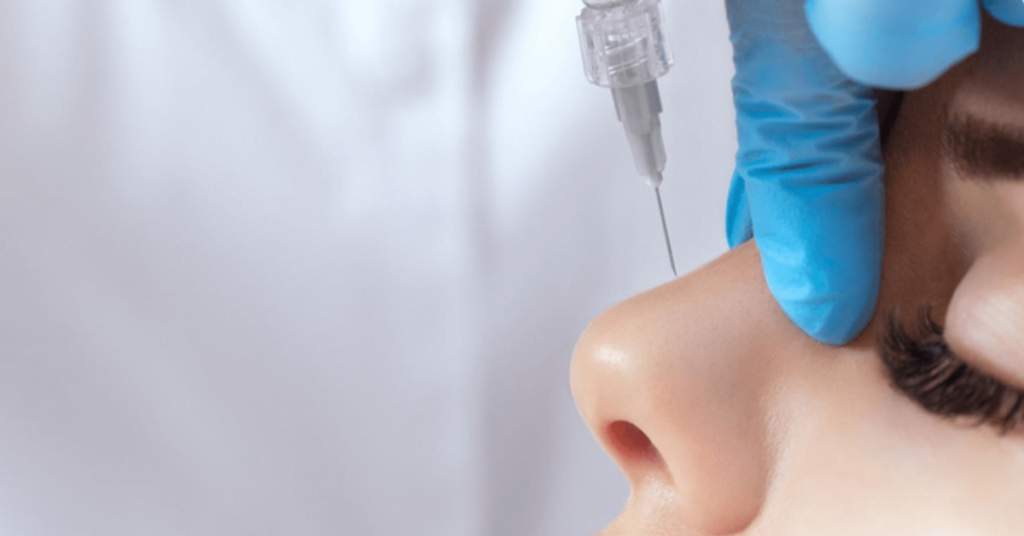
If you only want to make small changes to your nose, you may be an excellent candidate for non-surgical rhinoplasty at Astrum Medical, which can be done with dermal fillers in a quick, safe, and non-invasive treatment. What is non-surgical rhinoplasty? Rhinoplasty refers to surgical procedures on the nose. There are, however, non-surgical methods to reshape the nose. These non-surgical rhinoplasty medical procedures can only augment areas on the nose, not reduce the size of the nose, as they are performed with injectable dermal fillers that correct depressions. It cannot be used to correct functional problems with the nose such as breathing difficulties. The facial dermal injectable fillers commonly used for non-surgical rhinoplasty in Astrum Medical are Restylane, Juvederm and Perfectha or a combination depending on the treatment performed, although others may also be deemed appropriate. The use of injectable facial dermal fillers can: * Fill a nasal sidewall depression * Lift the angle of the tip of the nose * Provide a smoother appearance to the bridge of the nose that will diminish lumps or bumps * Make the nose appear symmetrical by straightening out the appearance. Non-surgical rhinoplasty in Astrum Medical is performed by thoroughly cleansing the area to be treated and then applying a topical anesthetic in the form of a cream and allowing this to numb the area. When the area is numb, the most appropriate facial filler depending on the location is then injected into the deeper subcutaneous tissue of the skin to achieve the desired effect. A liquid rhinoplasty procedure is safe, not time-consuming, and non-invasive. Bruising and swelling are minimal. The patient can generally immediately resume normal daily activities. Call to arrange a consultation with our doctors at our conveniently located, modern, and welcoming Chelsea clinic.
Non-Surgical Rhinoplasty Treatment

Updated: Mar 10 If you only want to make small changes to your nose, you may be an excellent candidate for non-surgical rhinoplasty at Astrum Medical, which can be done with dermal fillers in a quick, safe, and non-invasive treatment. Rhinoplasty refers to surgical procedures on the nose. There are, however, non-surgical methods to reshape the nose. These non-surgical rhinoplasty medical procedures can only augment areas on the nose, not reduce the size of the nose, as they are performed with injectable dermal fillers that correct depressions. It cannot be used to correct functional problems with the nose such as breathing difficulties. The facial dermal injectable fillers commonly used for non-surgical rhinoplasty in Astrum Medical are Restylane, Juvederm and Perfectha or a combination depending on the treatment performed, although others may also be deemed appropriate. The use of injectable facial dermal fillers can: * Fill a nasal sidewall depression * Lift the angle of the tip of the nose * Provide a smoother appearance to the bridge of the nose that will diminish lumps or bumps * Make the nose appear symmetrical by straightening out the appearance. Non-surgical rhinoplasty in Astrum Medical is performed by thoroughly cleansing the area to be treated and then applying a topical anesthetic in the form of a cream and allowing this to numb the area. When the area is numb, the most appropriate facial filler depending on the location is then injected into the deeper subcutaneous tissue of the skin to achieve the desired effect. A liquid rhinoplasty procedure is safe, not time-consuming, and non-invasive. Bruising and swelling are minimal. The patient can generally immediately resume normal daily activities. Call to arrange a consultation with our doctors at our conveniently located, modern, and welcoming Chelsea clinic.
BROTOX – Botox for Men
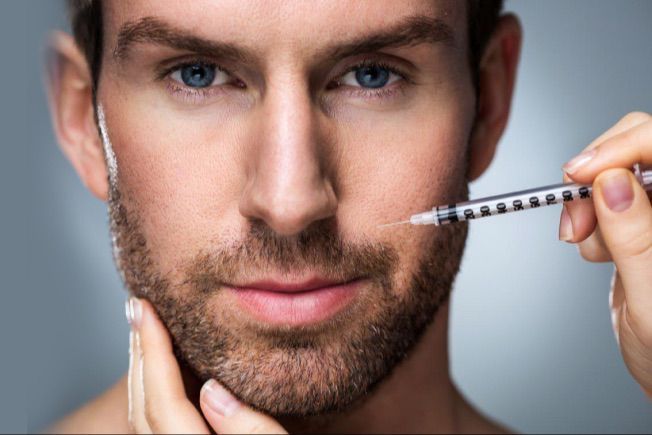
Everything You Need to Know About Botox for Men When you think about BOTOX®, you usually think about women who want to remove their forehead wrinkles. However, approximately 20% of the Botox patients are actually men in the UK. The fact is, our aesthetic services are available for both men and women of all ages who want to look younger and refreshed. What is Botox? The history of botulinum toxin (Botox) dates back to 1989 when the FDA approved this neurotoxin protein produced by the bacterium Clostridium botulinum as a treatment for misaligned eyes (strabismus) and uncontrollable blinking (blepharospasm). However, during clinical trials, doctors discovered an interesting, harmless, and quite amazing side effect –– that it caused patients to lose their forehead frown lines by blocking the release of a chemical that enabled the muscles to contract. Today, it is the only FDA-approved prescription treatment to temporarily improve the appearance of moderate to severe frown lines between your eyebrows and crow’s feet. What Was The First Medical Use For Botox? Since 2010, Botox has actually been the first approved intramuscular preventative treatment for Chronic Migraine. Botox markets itself by saying it “prevents headaches and migraines before they even start” and has been “proven for chronic migraines for almost 10 years.” What Is The Difference Between Botox, Azzalure/Dysport and Bocouture? A variety of approved neurotoxins are available at Astrum Medical Clinic under their popular brand names for men. As the first on the market, “Botox”, its brand name for Botulinum Toxin A, is frequently asked for by name as a non-surgical wrinkle reducer. The effects from injections typically last 4 to 6 months. Meanwhile, other popular Botulinum Toxin A products are used as an injectable and wrinkle reducer for men, specifically: Azzalure/Dysport is typically used to soften and smooth wrinkles on the forehead for natural-looking results and a tighter, brighter face. It was popular in Europe before being FDA approved in America during 2009. It is natural-looking, fast-acting, and its effects may last about 3 months. Bocouture is the only clinically proven anti-wrinkle injection uniquely purified to remove wrinkles without unnecessary proteins in its composition. It is used to temporarily soften the appearance of frown lines between your eyebrows, as well as to treat severe spasms in your neck muscles, and muscle stiffness. Its injections are recommended to be spaced at least three months apart to maintain its effectiveness. How Do Botox, Dysport, and Bocouture Work? All of these popular cosmetic treatments work primarily by relaxing facial and other wrinkles, reducing any visible signs of aging, and smoothing lines on the forehead. Botox for men does not require anesthesia, and each procedure typically takes about 15 minutes, there is no downtime afterwards, and discomfort is usually minimal. Above all, each prevents deep lines and wrinkles from forming, helps you look younger, and raises your self-esteem. Our doctors at Astrum Medical Clinic always assess the patient before dosing the amount of Botox needed. Every patient varies depending on the strength of their muscles, and the depth of their current lines. Our GMC registered doctors can best recommend which injectable or dermal filler he or she prefers to help you decrease forehead creases, relax crow’s feet around your eyes, restore lost volume around your nose and mouth, reduce the appearance of a double chin, reshape the skin around your nose and mouth, or to address other signs of aging. Book A Free Consultation! Meet with Dr V, Dr Wais, Dr Kostantinos, Dr Olga or Dr Alya to learn more about which treatments will work for you! Besides Wrinkles on The Face, What Are Some Different Reasons for Using Botox For Men? Botulinum toxin is also being used to treat disorders such as: Inhibiting excessive sweating in your forehead, underarms/palms or feet. Involuntary contractions of your neck muscles. Involuntary shoulder spasms. Mitigating TMJ pain. Neuropathic pain. Overactive bladder. Preventing chronic migraines. Slowing hyperactive nerves. Some allergy symptoms. Urinary incontinence. Why Is It So Important to Choose a Botox Specialist? Dr V is a high profile surgeon and advanced Aesthetic doctor at Astrum Medical Clinic who specialises in minimally invasive cosmetic procedures for both men and women in London. He is also an instructor and trainer for advanced Aesthetic procedures and injections to other doctors/nurses in the UK. Through his years of experience, he knows how to treat men with Botox so that they achieve the results they want. In fact, he makes sure that Botox injections on their faces yields natural, yet effective results to minimize their lines and wrinkles using his signature Brotox technique.
The Complete Guide to Chin Augmentation with Filler at Astrum Medical Clinic

In the ever-evolving realm of cosmetic enhancements, chin augmentation fillers have emerged as a revolutionary solution, reshaping facial aesthetics. Leading this charge is Astrum Medical Clinic, offering tailored chin filler treatments in London to enhance your natural beauty. But what role does the chin play in defining our facial aesthetics? This article explores the transformative potential of chin fillers, uncovering their ability to harmonise facial features and exude confidence. The Significance of the Chin in Facial Symmetry The chin, often overlooked, holds a pivotal role in the harmony of facial features. It serves as an anchor, bringing balance and proportion to the face, shaping our overall appearance. The size and contour of the chin significantly impact the perception of other facial elements. A well-defined chin can enhance the jawline, complement the cheeks, and create a pleasing profile view. Conversely, a recessed or undefined chin can disrupt this harmony, causing other features to appear exaggerated or unbalanced. Understanding Chin Augmentation with Fillers Chin fillers, a core offering at Astrum Medical Clinic, are injectable treatments designed to enhance chin shape and volume. Unlike dermal fillers used in other facial regions, these are tailored specifically for sculpting and defining the chin area. Made primarily of hyaluronic acid, a natural substance found in the skin, these fillers offer a safe, reversible, and non-permanent solution for chin enhancement. Distinct from general facial fillers, chin fillers focus on precision and contouring, aiming to reshape the chin into a more aesthetically pleasing form. This targeted approach allows for subtle yet impactful enhancements that align with the natural facial structure. Advantages of Chin Fillers Beyond cosmetic enhancement, chin fillers offer transformative benefits. Clients often report increased confidence and self-esteem post-treatment, with advantages including: Enhanced Facial Profile: Augmenting the chin can create a balanced side profile, complementing other facial features. Improved Facial Harmony: A well-proportioned chin enhances overall facial symmetry, creating a more harmonious appearance. Rejuvenation: Chin fillers can address aging concerns in the lower face, such as sagging skin or a receding chin line. The Procedure: What to Expect The chin filler procedure at Astrum Medical Clinic prioritises comfort, safety, and excellence. The process typically involves: Consultation: A thorough discussion of aesthetic goals and suitability for chin fillers. Preparation: Cleansing of the chin area and application of a numbing cream for comfort. Injection Process: Precise injection of filler to achieve desired shape and volume. Duration: Typically less than an hour, making it a convenient treatment option. Aftercare: Minimal downtime, with possible temporary swelling or redness. Results are immediate, with the full effect visible once any swelling subsides. Expert practitioners ensure a smooth and comfortable experience, guiding clients through each step with care and attention. Customisation and Personalisation At Astrum Medical Clinic, each client’s facial structure is unique, warranting a personalised treatment plan. Practitioners consider factors such as facial symmetry, natural contours, and individual aesthetic goals. This bespoke approach ensures that clients leave feeling confident and satisfied with results that enhance their natural beauty. Safety and Side Effects Client safety is paramount, with chin fillers administered by trained and experienced practitioners. Common side effects are mild and temporary, such as bruising or swelling at the injection site. Premium, clinically approved products are used, adhering to stringent health standards. A comprehensive assessment of medical history is conducted during consultation to ensure safety and care. FAQs on Chin Fillers Duration of Results: Typically lasting between 12 to 18 months, subject to individual factors. Pain during Procedure: Minimal discomfort reported, thanks to numbing cream and fine needles. Reversibility: Hyaluronic acid-based fillers can be dissolved if needed, offering reassurance to clients. Post-Treatment Restrictions: Advised to avoid strenuous exercise and extreme temperatures for optimal results and to minimise complications.
6 Tips to Improve Your PRP Treatment Results
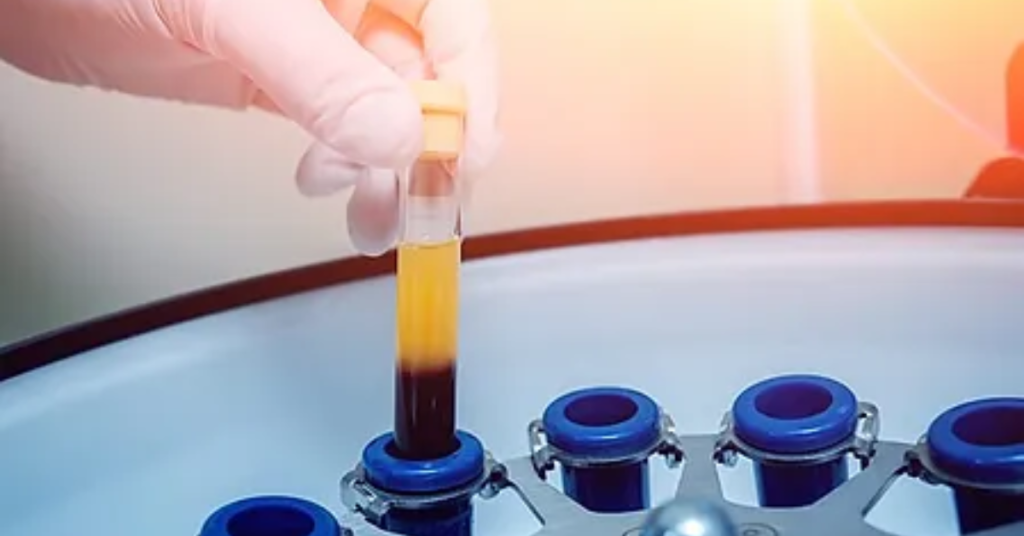
PRP (platelet rich plasma) injections by themselves are wondrous procedures that are completely natural and can produce highly satisfying results. But did you know there are 6 simple things you can do to help improve the outcome of your PRP procedure? Blood Cells and Growth Factors No matter who you are, how old or what kind of shape you are in, most people receive great benefit from their PRP procedure. However, there are a lucky few who see incredible results after only one or two treatments. Unfortunately, the occasional person sees very little positive results. Why is that? There are numerous research studies being conducted on PRP and it’s effects on healing and tissue growth. While there is quite a bit of dissent on how PRP affects the human body, most physicians agree that the activated growth factors in platelet rich plasma stimulate healing and tissue growth to some degree. It does this (in simple terms) by attracting uni-potent and multi-potent stem cells to the area of treatment. This healing and regeneration factor is different from person to person for a variety of reasons. Depending on your health, age, dietary habits, exercise levels and pharmaceutical/drug intake, you may see greater or lesser benefits from PRP. Part of this is due to the amount of red blood cells in your plasma. When we extract the platelet rich plasma from your blood, often times we see some people get less volume of PRP than others. Less PRP means less growth factors, which can mean your results may not be as good as they could have been. Other times we see that poor cardiovascular health and compromised immunity can impede our body’s ability to regenerate. Certain pharmaceuticals, over-the-counter pain medications and recreational drugs and alcohol can all reduce the effectiveness of your PRP procedure. How You Can Improve Your PRP Outcome High Intensity Cardio Exercise This may sound like a no-brainer, but it’s probably the most important key to ramping up your production of red blood cells and strengthening your immune system. Your body produces higher levels of red blood cells and you get more PRP from your blood. With a turbo-charged immune system, it works hand-in-hand to give you the best results possible. Eat a Diet Rich in Green Leafy Vegetables Often the hardest lifestyle change for most people to make is to change their dietary habits. Yet it is the single most important aspect of our long term health, and it isn’t even close. By introducing more green, leafy vegetables into your diet, cutting out sugary, processed, fatty foods and eating smaller portions throughout the day, you gain multiple benefits that can help your PRP procedure. You can achieve increased immunity, better circulation due to lower cholesterol, and regulated hormone levels — all beneficial to the outcome of your PRP procedure. Don’t Smoke, Drink or do Drugs So far, this all may sound like the Naturopathic Doctor’s mantra, but it still holds true for just about anything, and PRP is no exception. Smoking cigarettes especially effects the outcome of PRP procedures. Not only does it reduce the volume of PRP you can get from the same amount of blood, but the toxins in cigarette smoke impede the stem cells’ ability to function. According to the US National Library of Medicine: The documented effects of the toxic constituents of cigarette smoke — particularly nicotine, carbon monoxide, and hydrogen cyanide — suggest potential mechanisms by which smoking may undermine expeditious wound repair. Compared with nonsmokers, smokers have a higher incidence of unsatisfactory healing after face-lift surgery, as well as a greater degree of complications following breast surgery. Increase B-Vitamins and Hydrate By increasing your intake of B-Vitamins, especially Vitamin B12, and staying hydrated before your procedure, you can increase your red blood cells and hemoglobin among other benefits. The range of B-Vitamins (Thiamine, Riboflavin, Niacin, Pantothenic Acid, Pyridoxine, Biotin, Folate and Cobalamin) are all essential for your health and can be found by eating a variety of healthy plant and animal foods. You will need to supplement your B12 intake if you are vegan or vegetarian since it is mainly found in animal based foods. Avoid Non-Steroidal Anti-Inflammatory Drugs (NSAID) Do not take aspirin, Advil, Motrin, Aleve, non-steroidal anti-inflammatory medication (NSAID), or Corticosteroids for up to 5 days before and after the procedure. These drugs may inhibit the stem cells natural inflammatory response. You may take acetaminophen (Paracetamol, etc.) safely. Follow Your Post-Procedure Routine Your doctor will discuss with you the best routine to follow after your procedure to help produce the best possible results. It’s very important that you follow this routine to the best of your ability. For instance, you will be advised to stay out of the sun for up to 3 days after the treatment, and then to wear sunscreen on your face anytime you go outside after. You’ll need to keep your face clean, moisturized and avoid picking at scabs. If you follow these simple steps, we are confident that your outcome will exceed your expectations. We also want you to understand that the benefits of PRP show up over time. Let’s face it, we all want immediate results, but our body works on its own schedule, so the only thing we can do is to be patient. The best thing to do is to take pictures and keep a log of your progress throughout the healing process. This allows you to go back and see where you were as compared to where you are, and the difference might surprise and delight you.
Famous Celebrities Who Have Used PRP Treatments

Are you unfamiliar with PRP (Platelet Rich Plasma) treatment? Well, it’s time to know more about it because your favourite celebrities are getting it! PRP therapy has been used for years to help people recover quickly from injuries. Since celebrities work around the clock and need to be on set the next day, they have started opting for PRP therapy. In this article, you will learn which famous celebrities have used PRP therapy to recover rapidly. Reading these success stories may help you realize how beneficial PRP can be for you! Platelet Rich Plasma Therapy- What is It? PRP therapy is a popular procedure that allows patients to recover from injuries naturally and within a shorter period of time. When you get hurt, blood immediately rushes to the affected area. This is why you may experience swelling in a particular region after you get an injury. The increased supply of blood helps the body heal itself. However, the blood cannot always reach the exact area of injury. That means your body will take longer to recover. PRP therapy allows blood to immediately reach the area of injury. The process is extremely simple. A doctor comes and draws a blood sample from your body. Then, your blood is put into a spinning centrifuge that separates the plasma. This is then injected into the injured region, allowing your body to begin the process of healing immediately. PRP therapy has been around for centuries. Back in the 90s, it was used to treat broken bones and spinal injuries. Plastic surgeons also commonly used it to encourage recovery. However, it is only recently that the procedure has started to gain popularity. Today, lots of medical professionals recognize the benefits of platelet-rich plasma therapy. Celebrities Who Use PRP Therapy PRP therapy has become extremely common among celebrities. Given their tough schedules, they need fast recovery options so that they can get back on set. Here are a few famous celebrities who have used this procedure to speed up their recovery: 1. Angelina Jolie Angelina Jolie has been a fan of PRP therapy ever since the advent of the Dracula Facelift. This is a procedure that uses a PRP shot in the face. It encourages the production of collagen in the surrounding area, leading to younger, more elastic skin with fewer wrinkles and fine lines. This procedure worked brilliantly on Angelina Jolie’s face as it made her look younger and fresher on screen. 2. Kim Kardashian Is it even a thing till the Kardashians have tried it? PRP therapy has also been used by Kim Kardashian to give her face that youthful glow that is sought-after in the media industry. A popular video shared by Kim showed her face speckled with dots of blood as she got the Vampire Facial done for the first time. 3. Tiger Woods PRP therapy is not only for women. Tiger Woods is the perfect example of that. In 2008, he injured his knee badly enough to need a knee reconstruction. While effective, this procedure leads to knee pain and other problems in the future. Before a big tournament, Woods decided to try PRP injections. He had only received a couple of injections in his knee when he competed in the Master’s Tournament. He made a full recovery and was able to compete without feeling the slightest hint of pain. 4. Kobe Bryant Kobe Bryant is known to be the king of basketball. However, the risk of knee injury does not spare anyone- even great players like Bryant. Due to years of hardcore practice, he had started to notice some pain in his joints. In fact, the pain got so bad that he considered retiring from his career much earlier than expected. 5. Alex Rodriguez Alex Rodriguez had to undergo surgery in 2009. His fans were extremely worried about his return and started to believe that the talented basketball player would not be seen on the field any time soon. Conclusion There is no denying that PRP therapy helps make the skin look younger while diminishing the appearance of fine lines and wrinkles. Its collagen-boosting ability ensures skin elasticity and thickness, which is why it is becoming increasingly popular among celebrities. Moreover, PRP therapy is also being incorporated in several medical procedures today. It is a highly successful procedure that is known to speed up healing and provide full recovery. Many doctors around the world have started to use it in their practice, so why shouldn’t you? After all, you don’t need to be an athlete or celebrity. At Astrum Medical we offer almost all types of PRP treatments. For more info please contact us.
Treatment of Cellulite with PRP (Platelet Rich Plasma)
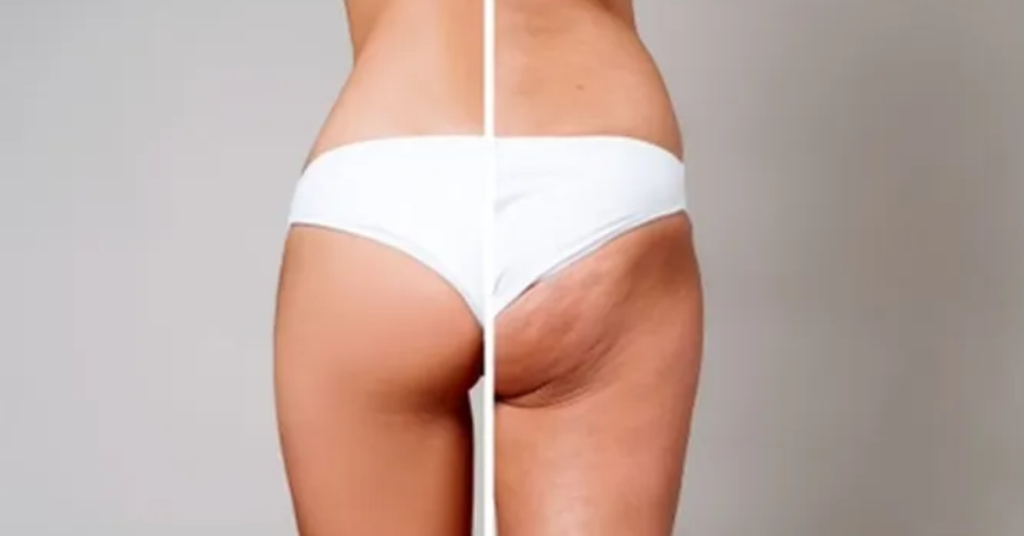
The procedure performed with PRP technology is one of the most popular in modern aesthetic medicine and has established itself as an effective means of rejuvenation, treatment of alopecia, acne, hyperpigmentation, scars, stretch marks. Experience shows that the effectiveness of PRP therapy increases significantly when combined with other methods of aesthetic medicine. Recently, autologous platelet plasma has also been used to correct cellulite. In combination with mesotherapy, the PRP procedure provides excellent results and contributes to a more effective elimination of this cosmetic blemish. What is cellulite? Cellulite is one of the most common imperfections in women of childbearing age. When fatty tissue accumulates excessively in the subcutaneous tissue and retains water, the so-called cellulite occurs. In fact, its formation mechanism is related to microcirculation dysfunction, that is, low blood flow in these areas, which tends to form a fibrous membrane that traps fatty tissue and water. PRP treatment for cellulite PRP treatment is the most powerful way to treat cellulite and ensure that your skin regains a smooth surface. Since there are multiple causes of cellulite, PRP is used as a complementary treatment while providing the best possible results. Once properly diagnosed, PRP is obtained by drawing your own blood with special PRP tubes and processing it to extract a high concentration of growth factors (these are important for treating the cellulite areas). The process of reinjecting your own blood plasma into the skin is based on the process of biostimulation, which is the activation of the skin’s biological functions with the aim of smoothing its texture, resulting in aesthetic improvement. PRP has the ability to produce growth factors that signal collagen molecules to revitalise the skin area, making it smoother, firmer and tighter. When treating cellulite areas of the skin, PRP therapy helps to smooth out the hollows in the skin and also contributes to firmness.

